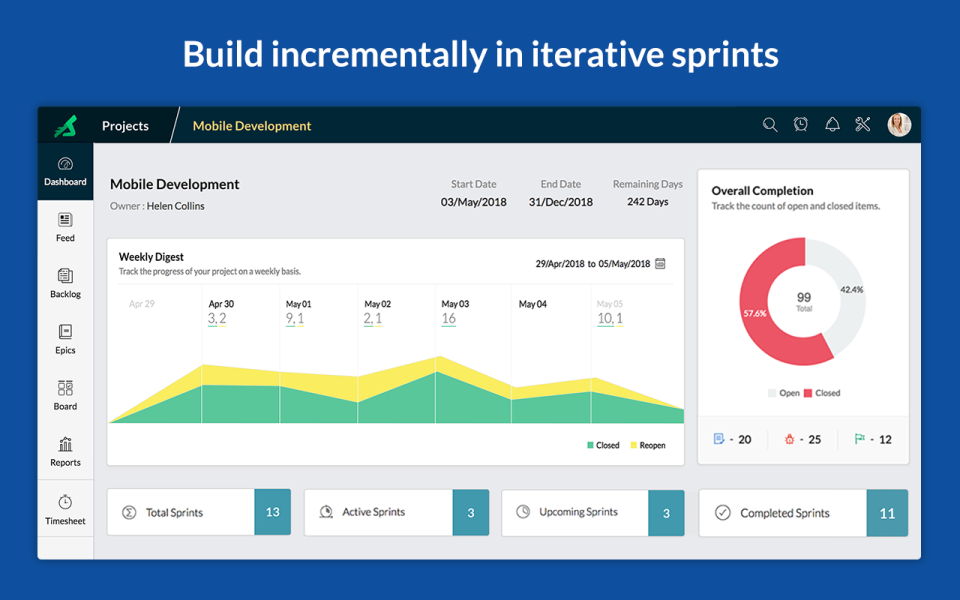

Now let’s go deeper into the question of core features that need to be in a good bug tracking tool:
#Taskboard zoho vs version one how to#
This includes useful details like the time the bug was reported, a description of error behavior, and how to reproduce it.
#Taskboard zoho vs version one software#
In addition, bug tracking software provides a record of bugs that have been discovered and info already known about them. So what is a bug tracking tool? In a nutshell: the bug tracking system has a set of all features that help resolve and manage issues effectively. Screenshots, screen records or workflow of what happened are extremely useful This means you need options to include following information: Great bug tracking software gives you flexibility to include as much info about the bug as possible to prioritize and fix it. It will help us evaluate the bug tracking tools. Let’s also look at what needs to be included in a report. Resolving – actually finding in how to fix a bug.Prioritization – the team will prioritize the issue and work on that.Assigning – finds out who is responsible for the issue.Capturing – captures the bugs and issues.The other alternative approach for workflow is this: We will not dive into this, though, as the theme of the article is different. For example, to fix an issue you need to reproduce it, and a software developer involved in it. The basic setup follows these rules:Įach step consists of specific actions you need to perform, and specific people involved. The next step is to set up a bug tracking funnel. It’s a tool that gives everyone on your team visibility into bugs so they can work on the right ones at the right time. Bug tracking software is more than just a database. Thus you need to use specific bug tracking tools. If this gets big, though, you may be overwhelmed. You can track the bugs with info about them, and work through them. The simplest way to track bugs is a basic spreadsheet. You can use different tools for this type of reporting.Īlright: you have established the source of bug reporting. The other way is to learn about bugs from your users – this is external bug reporting. Your QA or software developer can manually test the applications to find bugs. Before any new or updated software is released, it can go through an internal testing phase. What is the bug tracking workflowįor instance, you can start by implementing an internal bug reporting policy. When you realize you need to integrate a bug tracking process in your company, you will need to implement a certain workflow. It does not sound fun, but if you want to provide good services, there’s no other way but to establish a bug tracking and fixing process.

Bug tracking is the process of reporting, prioritizing and dealing with bugs and issues. Let’s start by defining what bug tracking (or bug tracking process) is. What tools should be used? How do we set up processes? In this article, we will take a closer look at these issues. In today’s online world, almost all companies face bugs in their products and wonder how to manage them.


 0 kommentar(er)
0 kommentar(er)
